If you never got to experience something, you never think to miss that thing. One such thing being T-tops, which were a common thing back in the ’70s and well into the the ’90s but which are no longer seen, today.
Why?
And – what?
The T-Top is a type of car top that attempts to bridge the gap between a soft-top (i.e., a convertible) and a hard top. It was also an attempt to preemptively deal with what was considered, at the time, to be the impending de facto banning of convertibles, via government regulations.
One has to go back to 1970 to understand what almost happened.
That was the year the federal government got into the business of decreeing automotive “safety” standards, via the newly created National Highway Traffic Safety Administration (NHTSA), which plagues us to this very day.
Where the constitutional authority to create – to empower – such an agency can be found in the federal Constitution, which ostensibly limits the power of the federal government to create and and empower such agencies is difficult to divine.
It was just sort of found . . .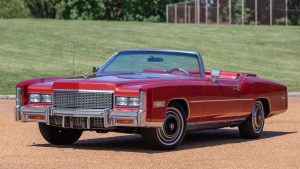
Anyhow, the federal government began issuing regulations defining what federal bureaucrats considered to be “safe” car design – which the car manufacturers were legally obliged to abide by. This is interesting, in view of the fact that no law was ever passed by Congress regarding these. That is the strange nature of regulations – which have the force and effect of laws without the difficulty of those issuing them having to get a law passed. In this manner, unelected bureaucrats – people who have never run for office or been sanctioned by a single voter, let alone a majority of them – become de facto law-makers who cannot easily be removed from their offices.
The little doctor who effectively ran the country without having been elected to any office – and who is insolently unaccountable to any voter – being perhaps the best example of the species.
It is also interesting to observe that “safety,” as defined by the federal government, is not the working definition of that word that most people think of when they hear that word.
Kind of like “vaccines” – when they don’t immunize. 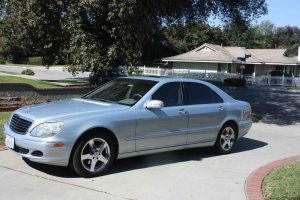
Is every car made before the government began issuing “safety” regulations “unsafe” – as in, dangerous to drive? Are they unstable? Crash-prone? Did the wheels fall off? The steering wheel disconnect?
Such defects in design or manufacturing flaws (if they are present) being just that.
But that is not the same thing as being “non-compliant” with whatever the latest government “safety” regulation happens to be.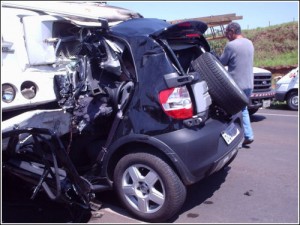
Perhaps the best way to make the point is to point out the fact that a Mercedes-Benz S Class sedan that was built in 2005 does not meet the latest federal “safety” standards, while a 2022 Nissan Versa does. Which car do you suppose is the “safer” one to be in, in the event these two cars ran into one another?
Back to T-Tops.
After NHTSA came into existence, the fear was that convertibles would be regulated out of existence as “unsafe” – i.e., they could not be made to comply with the “safety” regulations expected to issue from NHTSA pertaining to roof-crush standards. For obvious reasons, a top made of cloth crushes rather easily. It does not mean a convertible is “unsafe” to drive. It just means if you roll the thing, there’s no roof over your head. Just the same as you might get sunburned if you go outside on a summer day, shirtless and sans sunscreen. No doubt the federal bureaucracy is searching to find “constitutional” authority to regulate that, too.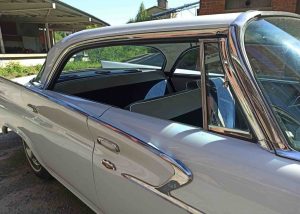
Anyhow, it was assumed by the car industry, back in the early ’70s, that it would shortly become legally impossible to continue making convertibles, notwithstanding no law had been been passed outlawing them. For those who remember, it is why Cadillac announced that it would stop selling convertible Eldorados – and made a lot of money selling marked-up examples of what people thought would be the last convertible Eldorados.
There were also what were called “colonnade” hardtops, which were hardtops designed to address the roof-crush compliance problem of the “pillarless” hardtops that preceded them. These latter were cars that did not have a structural I beam or pillar in between the front and rear doors and so had expansive side glass – and an unobstructed/panoramic view all around them. You might think that being able to see better is safer. And so it is.
That’s why I-beams – or colonnades – were added, as structural supports. But there was still the problem of having nothing but a hardtop over head when there were still a lot of people who wanted to see the sky – and feel the wind, instead.
T-Tops were seen as the answer and thus, their origins. You still had a hard-top, but two sections of it could be removed so as to be able to see the sky and feel the wind, again while also being compliant with the roof-crush “safety” standards then in effect. Lots of cars were offered with T-tops, beginning in the mid-’70s – which was right around the time the car industry anticipated not being able to legally sell convertibles anymore. 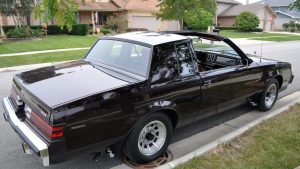
They became very popular, not just because they provided a way to see the sky above and feel the wind in your hair but also because when the tops were on, the car felt like it was a hardtop. And you could still see the sky – through the glass above your head – even when it was too cold to take the tops off.
Some T-tops leaked, of course – but people still loved them, even so. 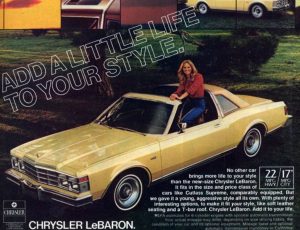
So why are they no more – and convertibles are still around?
As it turned out, it was possible to design compliant convertibles. Current models deal with the roof-crush standard via built-in or pop-up rollbars. As for T-Tops, the main reason they’re gone has to do with making them not leak, which isn’t easy – and which (apparently) most people won’t put up with, today. There is also a compliance problem in that adding the necessary bracing to what remains of the roof (the glass tops not being a structural element) in order to make them currently compliant would be difficult and costly and the expedient of adding a built-in or pop-up roll bar would be awkward as well as costly. 
This isn’t to say it’s impossible to make a compliant T-top car. Just as it’s not impossible to make a compliant diesel-powered car. It’s just too expensive to make it worth doing because too few people could afford it, which means whoever made it would likely lose rather than make money on it.
Got a question about cars, Libertarian politics – or anything else? Click on the “ask Eric” link and send ’em in! Or email me at [email protected] if the @!** “ask Eric” button doesn’t work!
If you like what you’ve found here please consider supporting EPautos.
We depend on you to keep the wheels turning!
Our donate button is here.
If you prefer not to use PayPal, our mailing address is:
EPautos
721 Hummingbird Lane SE
Copper Hill, VA 24079
PS: Get an EPautos magnet or sticker or coaster in return for a $20 or more one-time donation or a $10 or more monthly recurring donation. (Please be sure to tell us you want a magnet or sticker or coaster – and also, provide an address, so we know where to mail the thing!)
My eBook about car buying (new and used) is also available for your favorite price – free! Click here. If that fails, email me at [email protected] and I will send you a copy directly!




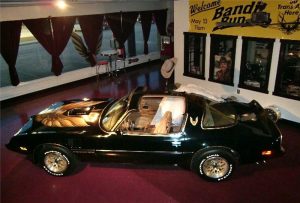








Thankfully, my 1997 Z28 Camaro T-tops have never had an issue with leaking, after all these years!
I have a convertible Mustang. The frame around the windshield is so wide it blocks my vision. One intersection in particular, the road I turn on leaving work every day, is sort of angled and is especially tricky. I almost mowed down a bicyclist. I had the top down that day, so I should have had better vision than a person in a sealed up car, but I still did not see him until it was almost too late. I got a not-nice hand gesture for that, but I’m grateful I didn’t hit him. When I stop there, I have to lean forward and backward around the windshield frame to double check that no one’s coming since it’s wide enough to conceal a whole SUV.
But at least I won’t be crushed in the unlikely event I manage to roll my car, which actually feels quite bottom heavy, low and wide and IMO, not overly rollable unless I’m doing something really stupid.
I am not sure if hardtop Mustangs also have that wide windshield frame (or whatever you call that pieces of metal that runs between the edge of the windshield and the door glass) or if it’s extra support just for the convertible. I don’t remember this being an issue in other Mustangs I’ve driven. But it seems unlikely Ford would design two different windshields and frames.
Hi Amy,
The two T-top’d cars I’ve owned (both second generation Camaros) hd great visibility and were lots of fun; the tops did leak, though – na dht structural integrity of the roof wasn’t good. Hairline cracks were evident at the upper C pillars, where they met the roof. Every second gen GM F car with T tops has these, if the car is original (not restored). But at least the visibility was good!
Not related, but in Pakistan at the moment, was talking to my dad. He was telling me about how, in 1970 he got an Oldsmobile Dynamic 98 a couple years old for 400 dollars. The thing had like a 7 litre V8 and made over 300 horsepower (cant recall the exact specs). And he did it while working at the Kraft factory somewhere in Indiana !!! Just imagine a kid today working shifts at a factory being able to get a car like that !!! (I suspect he would hardly afford his bus pass).
Man they’ve messed things up….
Hi Nasir,
Indeed they have… my parents owned several Oldsmobiles of that vintage, including a ’71 98 with the 455 Rocket. One of my earliest car memories is of seeing that decal – Rocket 455 – on the big air cleaner…
Was just browsing through “Live and Let Die”, from 1973, and remarking, “My Gawd, we Americans drove TANKS back then.”
Related topic: luxury brand loyalty declining.
https://www.zerohedge.com/technology/brand-loyalty-declining-most-luxury-automakers
What’s not mentioned in the article is what Eric has been saying for years. When there’s very little difference between the low end and high end, why bother with the badge? Air conditioning is air conditioning. Carplay is Carplay. Cruise control is cruise control. When all cars have electric starters paying up for a Cadillac becase it has an electric starter doesn’t make sense.
FTFA: Another Factor to Consider
Ongoing supply chain issues could also be contributing to wide-spread declines in loyalty. Rather than waiting several months (or in the case of EVs, years), buyers may switch to a different brand that has cars in stock.
Sure, blame the supply chain. Because all the components of your luxury car are the same as every other car. It’s all industrial Lego, so just buy the Chevy.
On another site that talks about old cars and the people that like them there’s been discussion on “The Democratization of Luxury”. It is as you say: “Standard Line” cars (Chevrolet, Ford, Hyundai/Kia, Toyota, Honda, etc.) offer the same perks (power windows and locks, power seats (with heat), A/C with dual settings, satellite radio, touch screens (for good or bad), sunroof or glass roof) that luxury cars do either standard or with a jump up to a trim line above base, and for thousands of dollars less than a Luxury Nameplate. And since manufacturers share platforms for luxury and standard line cars, it’s not like say a Lexus sedan is going to give you all that much more than a fully loaded Avalon that it shares its basic “guts” with.
And as Eric astutely noted, if even Mercedes and BMW are restricted to I4 turbos, why not buy a Hyundai or Kia or Toyota that’s loaded and keep the change? How much is that three pointed star or spinning propeller really worth?
As an aside, rented a brand new K5 (11 miles on the ODO) for a business trip this week. 1.6 I4 turbo. Needed some more “oomph”.
Well, continuing on those big sleds from the early 70s…when you paid about 25 percent LESS for a fully-equipped ’73 Chevy Caprice with the 454 big block, Turbo Hydro 400, and all the “bells and whistles”, than, say an equivalent Buick Le Sabre or Olds Ninety-Eight, what was the point in the other marquees? Sure, at least they still had their divisional engines, which gave them SOME degree of distinction, but otherwise, same basic body, most of the rest of the running gear, AC-Delco or Delco-Remy, or GM Harrison, and so on. Any wonder that Pontiac and Olds are but memories now?
Hi Douglas,
Pontiacs sold well throughout the ’70s. Models like the Firebird and Grand Prix were different enough to attract more than enough buyers to justify the division’s existence. But when Pontiac became a badge-engineered front for generic “GM” vehicles – after losing its V8 engine – that changed. I think Olds was offed by the downsizing that took place circa late 1980s. A small Oldsmobile being as absurd as a cheap Rolls Royce.
I never saw the appeal of T-tops over a true hard top convertable or targa top. The design was functionally ill conceived from the start as just a way to loophole around the mafias edicts. Sure they looked cool but the shape of the things always made them perform worse when it came to keeping the wind and water out. Even the Fieros extra large removable moon roof glass gave a good open air experience while providing better wind and rain sealing surfaces. To me T-tops will always be second best to the “real thing” like a pistol brace in place of a true buttstock, they only exist because Uncle Scam can’t keep his filthy fondlers off our stuff.
Hi East,
I’ve had two Camaros (’78 and ’81) that had them and even though they leaked, I loved ’em! That said, my ’76 TA – which I still have – has a hard top and so never leaked and for that reason, isn’t rusty!
Not only the leaking, but the fun experience of an unlatched / incorrectly latched T-Top panel quickly and violently ejecting itself from the roof and sailing over the car at highway speeds only to shatter on the highway behind. Happened to a friend of mine with a mid-1980s Pontiac Grand Prix. Must’ve been a real eye opener.
Myself I had some early 1990s cars with the pop-up and removable glass sunroofs. One aftermarket added (Plymouth Laser), one factory installed (Plymouth Sundance Duster).
No big shock the MOPAR factory installed sunroof would leak water like a sieve into the interior in a car wash or heavy rainstorm. 😒
But it was fun on a warm sunny day to pull the glass panel off and pretend you had a convertible. Even better with a pretty gal in the passenger’s seat and the wind blowing her hair about. Made the leaky roof worthwhile.
I’ve had 3 sunroofs, the first a 86 Honda Accord Lxi (long gone, sadly), the second a 11 Subaru Outback (gone, thankfully) and the third a 07 Toyota Camry Hybrid (still have), and none have leaked unless I left it open in a storm. I had to do that once with each for some reason.
The Cordoba was likely the “unsung hero” of what kept Mopar afloat in the dark days of the “Malaise” era. Chrysler had dropped its performance line, the E-bodies (Plymouth Barracuda, Dodge Challenger) after the ’74 model year, and it was wringing life out of it’s long-running A-body platform (Dodge Dart/Demon, Plymouth Valiant/Duster), but although sales of the compacts were strong, they just weren’t profitable enough. As for the big “Battleship” C-bodies…with the ’73 “Energy Crisis”, the bottom dropped out of the big “boats” market, taking Mopar’s profits from passenger cars with it. That just left the “B” bodies, which was also a platfrom dating from 1962 and getting decidedly “long in the tooth”. Chrysler re-vamped the “B” body line, and, for the first time, ever, had a Chrysler-branded model that wasn’t a full-sized vehicle, the Cordoba, essentially a badge-engineered Dodge Charger SE with the “Corinthian Leather”, as touted by the late Ricardo Montalban. The Ad campaign and use of the designer interiors made the new, smaller Chrysler, their first foray into the “personal luxury” market, a huge hit. This success is part of what, later when Chrysler was on the ropes and in danger of either outright bankruptcy or a hostile takeover, convinced the Carter Administration that it could innovate enough to keep itself viable as a car maker.
‘with the ’73 “Energy Crisis”, the bottom dropped out of the big “boats” market, taking Mopar’s profits from passenger cars with it’ — Douglas L Self
Compare to today’s ‘brawny’ five and six thousand pound pickups.
Corinthian leather and 15-inch display screens ain’t gonna save ’em.
Burn, baby, burn.
Doug,
And apparently Carter was mistaken, since Mopar no longer exists as an independent company.
True. It’s been passed around from Daimler-Benz AG to Fiat, now part of the “Stellantis” group, it’s “independence” is nominal. Still, amazing how its best-selling lines are modern updates of things one could get about FIFTY years ago, e.g., the Challenger and their full-size pickups.
I believe the NHTSA got its start in the Nixon administration, along with its evil twin, the EPA. Tricky Dick’s evil legacy, the two agencies most responsible for gimping our vehicle choices; both blatantly unconstitutional as Eric points out, not that ever bothers our overlords.
The EPA and the closing of the gold window was the one-two death blow to the US manufacturing base, and the US economy being an engine for increasing the standard of living of its residents.
Horst,
Indeed, that was the beginning of moving the US economy from one of production, to one of shuffling debt around.
I miss those giant doors too. Sure they were a pain in parking lots but no B pillar!
Of course when I was a kid I hated them because I was stuck in the back (with the opera window, another childhood annoyance) until mom or dad got themselves organized, opened the door and hit the seat lever. Then we climbed over the seat (easier when mom was driving since it was all the way forward) and basically fell out. But being an adult, dad bought the car he wanted, not the car designed for children.
Sitting up front though… woah.
“ dad bought the car he wanted, not the car designed for children “
Yep, my old man same drill, his motto “only cab companies and old people drive 4 doors”. 2 door hardtop man – loved the ‘64 Impala. Anybody whined about the backseat “what do I care, I’ll never sit back there, I’m driving!”
One of his favorites was a ‘40 (?) Buick Special Salesman coupe, he was sorry he ever sold it.
That’s funny. Grandad had a ’73 Coronet, 4 door. Same vehicle that was a staple of cab companies trying to update their look from the old tired Checkers with their 50’s styling.
The other grandfather was a little more adventurous, always driving big two door Pontiacs. And he smoked and drank and stayed up late to watch Johny Carson too.
T tops actually improved over time. Daughter #1 ‘78 Camaro leaked t tops no fix. Her ‘94 Camaro was great, went through two hurricanes while she worked at Disney World, pulled two palm fronds off the roof, only a few tablespoons of water on the mats. The ‘94 had t top storage built in the back too. I miss styled cars, we should have kept the ‘94 it was a great car.
“If the federal Government hadn’t gotten into the safety business there is no telling what we might have had, and how inexpensive it might have been.” EP.
We’ve all alluded to it before, we would probably at the least have our flying cars, even if they were expensive. I’m sure we would have those diesels that get 100 MPG, and cheap entry level plastic box cars like those in Chyna. Point being freedom to produce what one wants along with the choice to purchase as one pleases is the road to a truly brave new world. We made a seriously wrong turn decals ago
I guess my T-Bird was some kind of reaction to the safety thing. I’m under no illusion if I crash her, or roll her, I’m probably toast. Maybe thats part of the fun I experience driving it. It is nice to be able to remove the hard top and leave it off, then it becomes a true soft top convertible. This is how we like it from about March – December.
I saw someone was selling their black hard top, for my model, only 2k. I almost bought it as the only thing I don’t like about our T-Bird is the gay turquoise top. It looks much better with the black soft top. Wife nixed the deal as the garage is already too full, ‘no room for two hard tops.’ I told her I would sell the turquoise top and she’s like ‘who would want to buy it?’ I’m like ‘preciously my point.’
It’s like so many things that Uncle Sam sticks his big, fat nose into…you could afford your home WITHOUT the need for any Government programs if it weren’t for those programs in the first place! Amazing how, until the late 1960s, Detroit had no problem designing and building the vehicle the car public WANTED…well, not without some “hits and misses”, but product flops are part of the game.
The average motorist doesn’t need a Masters in Mechanical Engineering to figure out that a smaller vehicle will likely be cheaper to own and operate, at the expense of comfort and/or crashworthiness. Or you can buy the luxurious sled if you have the means to, and can procure fuel for it. Still comes down to: CHOICE. The consumer, and not some self-appointed “crusader” or bureaucrat, is supposed to be “king”.
‘a true soft top convertible. This is how we like it from about March – December.’ — Norman Franklin
That’s life in the Verde Valley, which hasn’t changed that much since Montezuma Castle was a thriving community of Sinagua native americans.
It’s a windy place at times. So cruising in an open-top T-bird is no big difference from just standing on the corner in Rimrock, Arizona.
Happy motoring!
Happy motoring to you as well Jim. I think only 2 or 3 like mine around here. If you see me racing up and down the interstate, flag me down. I promise not to shot.
My lovely bride and I drove up to Flag today, got deluged by rain around sunset crater, Just one tiny leak in the soft top, by the window. Came back, stoped at Talaque Paque for diner. Only saw one masked faggot the whole day, which was very nice,
The only other sign of the recent unpleasantness was at diner. The Filet mignon fajita platter we always share, that used to fill us both up… Now not so much. Portion control, or inflation shrinkage comrades.
Norman,
I’ve long proposed that without FedGov interference, we might have colonies on Mars, from which we would be mining asteroids.
You can omit the sunroof if you pony up for the carbon fiber roof.
‘I don’t even want the damn “panoramic sunroof” on my A4.’ — EM
From bitter experience, I know that sunroofs and moonroofs can leak, sometimes catastrophically.
During a nor’easter, the moonroof in my Acura leaked to the extent of destroying the front leather seats. Ouch …
Had to fabricate an interior shade curtain of foamcore for the moonroof in my Nissan Frontier, since the flimsy OEM part is long since out of production. Also had to replace the exterior weatherstripping to eliminate deafening wind whistle at higher speeds.
Sunroof = trouble.
Jim, the sunroof on my ’83 Jetta appeared to have been designed to leak. The felt around the edges wasn’t intended to make a watertight seal, but there were channels under it inside the roof structure that routed the water away harmlessly. I had the car a long time and never noticed a drop on the inside.
I hate the way convertibles look but always thought T tops were so cool.
Dan,
I agree, in most cases, because the car was not designed to look good as a convertible, but to look good as a hard top. The Toyota Solara is a great example. Nice looking car as a hard top, butt ugly as a convertible.
On the other hand, there are cars that were designed to look good as a convertible. The Mazda Miata, which I used as a daily driver for 20 years, is an example of a car that was designed to look good as a convertible, and in my opinion, succeeded.
T-Tops leaking, probably because though they were not part of the structural integrity of the roof, they were exposed to some of the same stress as the rest of the roof. Which means they were often moving around some, and wearing or braking seal. Once owned a Honda Del Sol that had a similar issue. Pop the top off, and you were driving effectively a convertible, no T involved. With out the beefed up structural integrity most convertibles have. Which is why in olden days, convertibles often weighed more than their hard top brethren. Honda forgot to do it, and the stress point showed up in mine at the door latches. Where the body panel the latch was mounted on actually tore from the extra stress from not having a structural roof, and that stress delivered to the door latches. Other than that it was a great little car. Too bad it was front wheel drive.
The Del Sol also had a power rear window that could be lowered, contributing to the “convertible” experience.
I can still remember Ricardo Montalban singing “Cordoba… oh oh…”
My step dad had a 70-something Ford LTD with a convertible soft-top. It was pretty cool. One of those “boat” cars that was very luxurious for Ford and the period.
He also had a VW “Thing”. I don’t remember all the details but you could take the Thing apart and make it into basically an open-air dune buggy if you wanted. Put the doors back on and the roof, etc, and drive down the road on a rainy day.
He also had a 50-something Corvette briefly. That had a removable panel convertible hard top IIRC. That was back in the 70s, just after he had the LTD.
I’m not a fan of convertibles but I think people should have the option to have ’em if they want. I don’t even want the damn “panoramic sunroof” on my A4. I’m not even a fan of the smaller sunroof on the A6 or A8. Audi puts those on every car sold in America with no option (any longer) to not have it. WTH?
You can still take the roof and doors off the Jeep Wrangler, and I think the new Bronco too. But you’re still going to be sitting in the adult-sized child safety seats, which doesn’t have quite the same feel as the old tube steel and vinyl seats of the classic Jeeps, where being out in the elements was a feature and riding home with a wet derriere was part of the charm.
My Wrangler even has T-Tops.
I remember Ricardo Montalban praising the “fine Corinthian leather” 😆😆